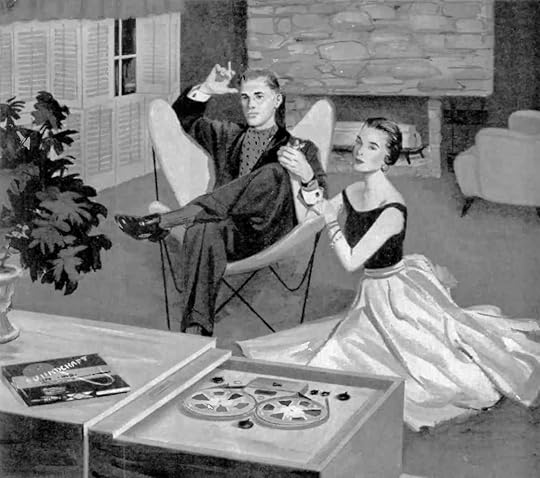Rewinding Tape Recording
In 1965, a magazine publisher named Richard Ekstract — a Brooklyn-born army veteran — loaned a piece of recording equipment to the artist Andy Warhol. The device, a prototype of a Norelco video camera, appealed to Warhol’s ongoing interest in working with moving pictures as a tool of artistic expression. (The Norelco wasn’t Warhol’s only recording device, not by a long shot. He famously was known to frequently carry a tape recorder with him.) The mention of Ekstract’s history (in an obituary by Penelope Green in the New York Times, following his death on August 7) led me to far less productive ends, unless spending a lot of time down a rabbit hole counts as productive.
I went searching — online — for reproductions of some of Ekstract’s magazines, which included a weekly trade journal titled Audio Times and another print publication, Tape Recording. The internet is good at many things and one of them is making ephemera from the past readily available with the click of a button. It’s no surprise that what appears to be roughly half of the run of Tape Recording, from its first issue, in December 1953, through Volume 17. No. 6 in 1970, is available at an old-school website called worldradiohistory.com.

To flip — figuratively — through the PDFs of Tape Recording on the World Radio History website is to watch home audio become part of everyday life as time passes. The first issue promises, on its cover, to help the reader “Add Sound to Your Christmas Movies.” Gear fetishism took a while to come to the fore, as the image on that issue is simply of a smiling young woman. By June 1954, however, we see a different woman on the cover, dressed formally, holding a wired microphone up to the face of her puppy, as if to record its bark.
That 1954 issue, like all of them, is filled with advertisements that promise fidelity in the audio sense, and also to modernize and enrich your home and cultural life:

The product taglines vary in their ad copy premises. The “Podium Presence” tone of Ampro Corporation technology lets you “Hear music as the maestro hears it.” Other items are more prosaic in their self-description: the Tandberg, we’re told, “Combines HiFi Quality with Long-Play Advantage of Slow Speeds.”

And each issue has plenty of editorial coverage, from tips on starting a tape collection, to reviews of recent recordings, to an explanation of what “decibels” are. One article recommends that students record themselves performing the dialog from comic books: “each can take one or a handful of parts in domestic dramas from the Dagwood family circle to Terry and the Pirates and Orphan Annie.” The cover to the October 1956 issue shows stuffed animals — one a donkey, the other an elephant — to promote a lead article on how tape recorders are used by news media to cover political conventions. It opens:
The two hottest spots in the world for tape recording last month were Chicago, Illinois, and San Francisco, California, where the nation’s two great political parties convened to name their choices for president and vice president of these United States.
More than a quarter of a million feet of tape — nearly 500 miles of it — rolled through hundreds of recorders, day and night, to bring to the American people a more detailed, dramatic and documented account of democracy in action.
Fast forward to 1970, and the magazine has expanded its scope: The cover is about slideshows, and the first story is about video cameras. Nor is the coverage purely practical. That same issue has a lengthy photo essay about composer John Cage using 52 tape recorders (“concealed backstage and operate by Cage and an associate, Lejaren Hiller”) for HPSCHD, a work for harpsichordist Antoinette Vischer: “Cage recorded Miss Vischer at the keyboard. Then by dubbing from one recorder to another, the composer was able to build up tonal patterns unlike anything live musicians could possibly imitate.” And yet, this being Tape Recording magazine, there’s still the benefit of a technical angle: “By using Scotch 201 low-noise tape, the composer kept tape hiss to a minimum during the repeated dubbings.”




